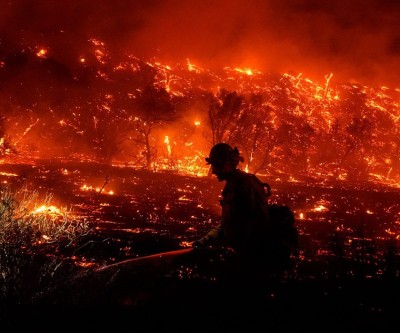Latest News
- Uber driver's account in Toronto suddenly deactivated; only source of income cut off after 'duplicate account' claim
- TDSB education chief fired by provincial supervisor; sweeping changes at Canada's largest education board
- 34 members of the "44" gang arrested in massive Durham police operation; millions of dollars in drugs and weapons seized
- Waterloo artist turns Ontario winter into art with backyard snow sculptures
- Third suspect arrested in connection with four murders in Carry the Kettle Nakoda community
Latest Ads
-
Jasmine Jewel
Call
-
Omidan group
Call
-
Amir Madanpour
Call
-
Dimo studio
Call
-
Yorkacademy
Call
-
Maryambagheri
Call
-
Shishlix Restaurant
Call

Special air-quality warnings, statements across Canada from Prairies wildfire smoke
TORONTO - Monday, July 14, 2025 - Smoke from wildfires in the Prairies has prompted air quality advisories and warnings across the country on Saturday.
Smoke from the fires has reduced visibility and air quality, which is expected to continue in some areas through Sunday, according to Environment Canada.
The advisories cover areas from eastern British Columbia to western Quebec, and vary in severity.
Some areas, including the Northwest Territories, Saskatchewan, Manitoba and Ontario, are currently under air quality advisories, where Environment Canada says "very high" levels of air pollution are being observed.
In contrast, areas in British Columbia, Alberta and Quebec are under air quality advisories, meaning the air quality is poor but poses a lower health risk.
Air quality warnings are issued when the Air Quality Health Index (AQHI) is 10 or higher and has been in place for at least six hours, according to Serge Bessner, a meteorologist with Environment Canada. Special advisories are issued when the index is between 7 and below 10.
The worst air quality has been reported in northern Ontario, Manitoba and Saskatchewan, particularly around cities such as Flin Flon, Manitoba, and Larange, Saskatchewan.
The Northwest Territories also reported very poor air quality, with the Fort Simpson area forecast to have an AQHI above 10.
On Saturday, Winnipeg was the only major Prairie city to be under an AQHI, but Alberta’s online forecasts show that the AQHI is likely to reach above 10 in the province’s northwest, including Fort McMurray, on Sunday.
Bessner added that while the conditions will continue through Sunday, the air quality is not expected to get any worse than it was on Saturday.
“Most of the smoke is higher up in the atmosphere and is being pushed to the ground by a high-pressure system,” he explained. He added that if the smoke reaches the surface faster than expected, the air quality could worsen.
According to the weather service, the reduced air quality can cause mild irritation to the eyes, nose and throat; while more severe symptoms such as chest pain and severe coughing are less common but possible.
People most at risk include infants, children, pregnant women, seniors over 65 and people with chronic health conditions or illnesses.
Environment Canada has advised people to avoid being outdoors as much as possible and to postpone outdoor activities or sports.
An air quality advisory has also been issued in the nation’s capital. Although the air quality index is in the “low risk” range, it was forecast to reach 7 throughout the day.
The worst air quality was reported in the cities of North Bay, Sault Ste. Marie and Sudbury, where the air quality health index was at 7, or “high risk,” according to the Ontario government’s forecast.
Although the Greater Toronto Area was spared an advisory on Saturday morning, the Environment Agency put the area on the list of areas subject to an advisory later in the afternoon.
The Ontario government predicted the area could see an air quality index of around 5, or “moderate risk,” on Sunday.
While air quality advisories dominated the news, extreme heat warnings were also making headlines in the west of the country, ahead of the weekend.
In Edmonton, where thousands of people gathered for outdoor events such as the annual Heritage Festival and a CFL football game between the Edmonton Alex and the Hamilton Tiger-Cats, daytime temperatures were forecast to range from 29 to 34 degrees Celsius.
Local authorities extended a heat emergency response until Monday.
Measures taken included connecting water stations to more than two dozen fire hydrants and having peace officers carry water bottles to distribute to those in need.
News source
Suggested Content
Latest Blog
Login first to rate.
Express your opinion
Login first to submit a comment.
No comments yet.


































